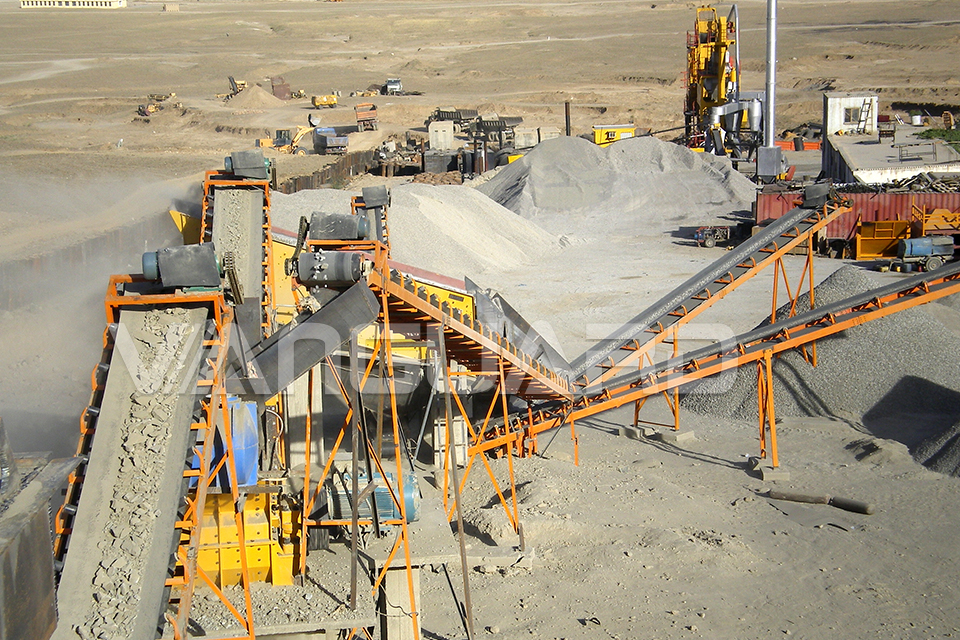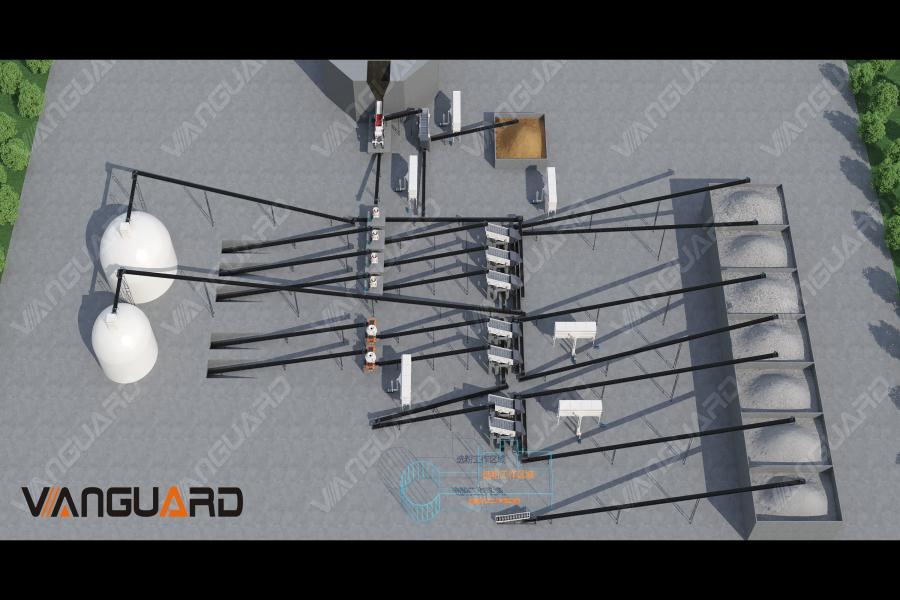What to do if there is too much Stone Powder in Machine-made Sand? 6 Ways to Control Stone Powder
Date:2024-06-06Four forms of stone powder in machine-made sand:
(1) Free powder: Stone powder particles do not adhere to each other or adsorb on the surface of sand and can move freely under the action of wind and gravity.
(2) Agglomerated powder: Stone powder particles are tightly aggregated together to form larger stone powder agglomerates, and the particles adhere to each other and aggregate. This type of stone powder aggregate is difficult to remove by traditional powder classification equipment due to the large particle size and mass of the agglomerates.
(3) Adherent powder: Stone powder particles are attached to the surface of larger sand particles. When the surface of the sand particles is relatively smooth, the stone powder particles are easy to remove under mechanical force, but when the surface of the sand particles is uneven, the stone powder particles and the sand particles tightly adhere to each other, and it is difficult to separate them by general mechanical methods.
(4) Cracked powder: There are often some natural cracks on the surface of sand particles, which are tens to hundreds of microns wide or generated by mechanical crushing. These cracks are often filled with a large number of stone powder particles. This is the most compact way of stone powder adhesion.
Stone dust control technology
The 6 types of stone dust control technologies and equipment are as follows:
1. Feeding vibrating grate screen
The increased mud content in machine-made sand will increase water demand and affect the strength of concrete, thus affecting its compression capacity. Therefore, before the raw materials enter the sand making process, they need to be sifted and discarded, which can significantly reduce the moisture content of the raw materials.
According to different material conditions, select the appropriate screen bar spacing to achieve different mud removal effects; For working conditions where the mountain bark is thick, the vegetation is difficult to remove, the mountain is severely weathered, and the interlayer contains large amounts of mud, which is easy to mix with soil, increasing the spacing between screen bars can effectively reduce the mud content.
2. Aggregate chute powder removal device
A certain specification of aggregate from the screening machine enters the aggregate unloading chute after the screening. An integrally detachable diffusion air distribution chamber is arranged in a suitable place, and the blower is connected to it. In this way, the free dust on the aggregate surface is blown up by the blower when passing through the chute and is collected in the dust collector under the suction effect of the dust collector.
In addition, the suction volume of the dust collector can be controlled by adjusting the pipeline regulating valve. When the blower adopts the variable frequency form, the ratio of blowing and suction is adjusted by the variable frequency control of the blower and the adjustment of the regulating valve, to realize the continuous control of the powder content of the finished sand and gravel aggregate within a certain range.
3. High frequency vibration screening pretreatment
Basic principle: The machine-made sand is preprocessed by high-frequency vibration to disperse the powder, separate the powder, coarsely and finely classify the sand, and then remove the stone powder contained by the wind.
Specific method: After the material is crushed by the sand making machine when it enters the screening module, it can be bulked through the bulker or the spiral material lever. This has a preliminary dispersion effect on the agglomerated and adhered stone powder and improves the quality of the material. The uniformity of distribution, at this time, the stone powder can be selected through the air separation device. After primary classification, the materials enter a high-frequency vibrating screen with a vibration frequency of 60-80HZ and an amplitude of 0.15-2.4mm for screening. The vibration intensity of this equipment is 3.5-5 times that of ordinary equipment, which can generate greater mechanical force and has a good dispersion and separation effect on agglomerated stone powder and surface-adhesive stone powder. At the same time, the coarse and fine classification of machine-made sand is efficiently achieved.
Compared with ordinary vibrating screens, the powder removal efficiency of machine-made sand after being screened by high-frequency vibrating screens is significantly increased by about 40%, and the required air volume is reduced by 45%.
4. Centrifugal powder classifier
The powder classifier is used in the sand making process. Its main function is to separate excess stone powder and useful particles and recycle them separately.
Its working principle is: to mix gas and powder to form a gas-solid two-phase flow. The rotating scattering disc and high-speed airflow make the powder-containing airflow obtain centrifugal force during rotation. The centrifugal force obtained by particles of different particle sizes is different, thereby realizing the separation of coarse and fine powder particles. At the same time, the coarse and fine powder particles are recycled separately by corresponding methods. The useful particles are the finished sand, and the useless fine powder is the waste material.
From the position of the powder separator installed in the building station, it is divided into raw material powder classifier and finished material powder selection process layout. The powder classifier has strict requirements on the moisture content. When the moisture content of the feed is higher than 5%, the powder removal efficiency of the powder separator will be seriously reduced. When the moisture content of the feed is 2%, the powder separator can better exert its efficiency, and the sand formation rate is between 60%-70%.
5. V-type static classifier + dynamic high-efficiency classifier
The raw materials enter the sand making machine, and after vibration screening, the coarse powder returns to the sand making machine, and the fine powder is sent to the combined classifier of the V-type static classifier + dynamic high-efficiency powder classifier. After being homogenized by the material distributor, it enters the classification system, the coarse particles enter the finished product warehouse, and the fine particles and fine powder enter the dynamic classifier with airflow. By adjusting the speed of the dynamic powder selector, the sand and gravel classification is adjusted, and the qualified products are discharged from the coarse powder pipe into the finished product warehouse. Adjust the particle grading of the finished product, and the fine powder is collected by the cyclone dust collector with the airflow and enters the stone powder warehouse. The airflow enters the V-type air inlet through the circulating blower.
6. Air Screen
The air screen combines wind separation technology based on vibration screening to realize the three functions of particle size adjustment, grading and screening.
Its working principle: The material is evenly spread under the action of the air screen dispersion device and blown to different positions of the air selection chamber by the blower. The lighter the material (the smaller the particle size), the farther it is blown away and the longer the screening distance; The lightest stone powder will be blown to the powder outlet position, adsorbed by the dust collector-induced draft blower, and finally concentrated in the powder tank. At the same time, the particle size adjustment plate automatically adjusts the proportion of the returned material to fine-tune the fineness modulus of the finished sand, thereby ensuring the stability of the fineness modulus of the finished sand.
For the dry sand making system using an air screen, the raw materials need to control their moisture content below 1.6% (surface moisture content 0.6%), without mud, and the feed particle size is 0-25mm and the gradation is continuous. If the raw materials change, the system capacity will change accordingly. If the raw materials contain too much mud or stone powder, separation processes such as powder classifier or powder removal equipment need to be used in the front stage.


